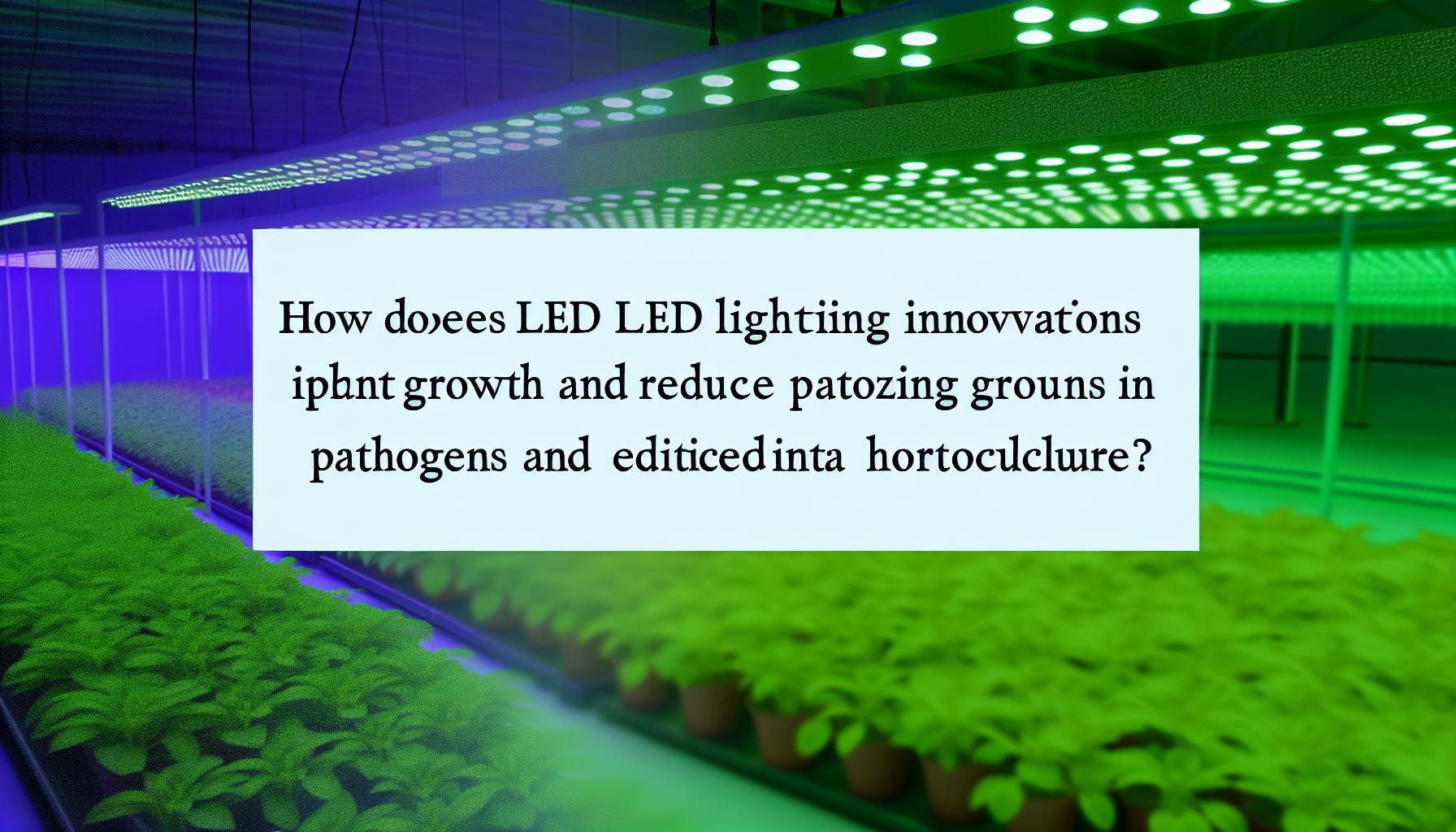Welcome to our blog on the fascinating topic of how LED lighting innovation is revolutionizing plant growth and pathogen control in horticulture. The advancements in LED lighting for horticulture have paved the way for unprecedented growth benefits for plants, thanks to the customization of light spectra that optimally enhance photosynthesis.
One of the key advantages of LED lighting in horticulture is its ability to reduce pathogens by limiting heat production, creating a healthier growing environment for plants. These energy-efficient grow lights not only promote plant growth but also help in maintaining a pathogen-free setting.
The use of red and blue light in LED grow lights has been proven to significantly improve photosynthesis in plants, leading to increased yields and healthier crops. With controlled environment agriculture becoming more popular, LED lighting technology offers a sustainable solution for maximizing plant growth in indoor settings.
By harnessing the benefits of LED lighting horticulture, growers can enjoy not only higher yields but also lower energy costs and reduced environmental impact. The adaptability of LED grow lights to controlled environments ensures that plants receive the optimal light conditions for their growth, leading to healthier and more productive crops.
Stay tuned for our upcoming blog posts where we will delve deeper into the specifics of LED lighting in horticulture, including its impact on plant growth improvement, light spectrum customization, pathogen reduction, energy-efficient grow lights, and greenhouse LED technology.
What Are the Unique Features of LED Lighting That Promote Plant Growth in Horticulture?
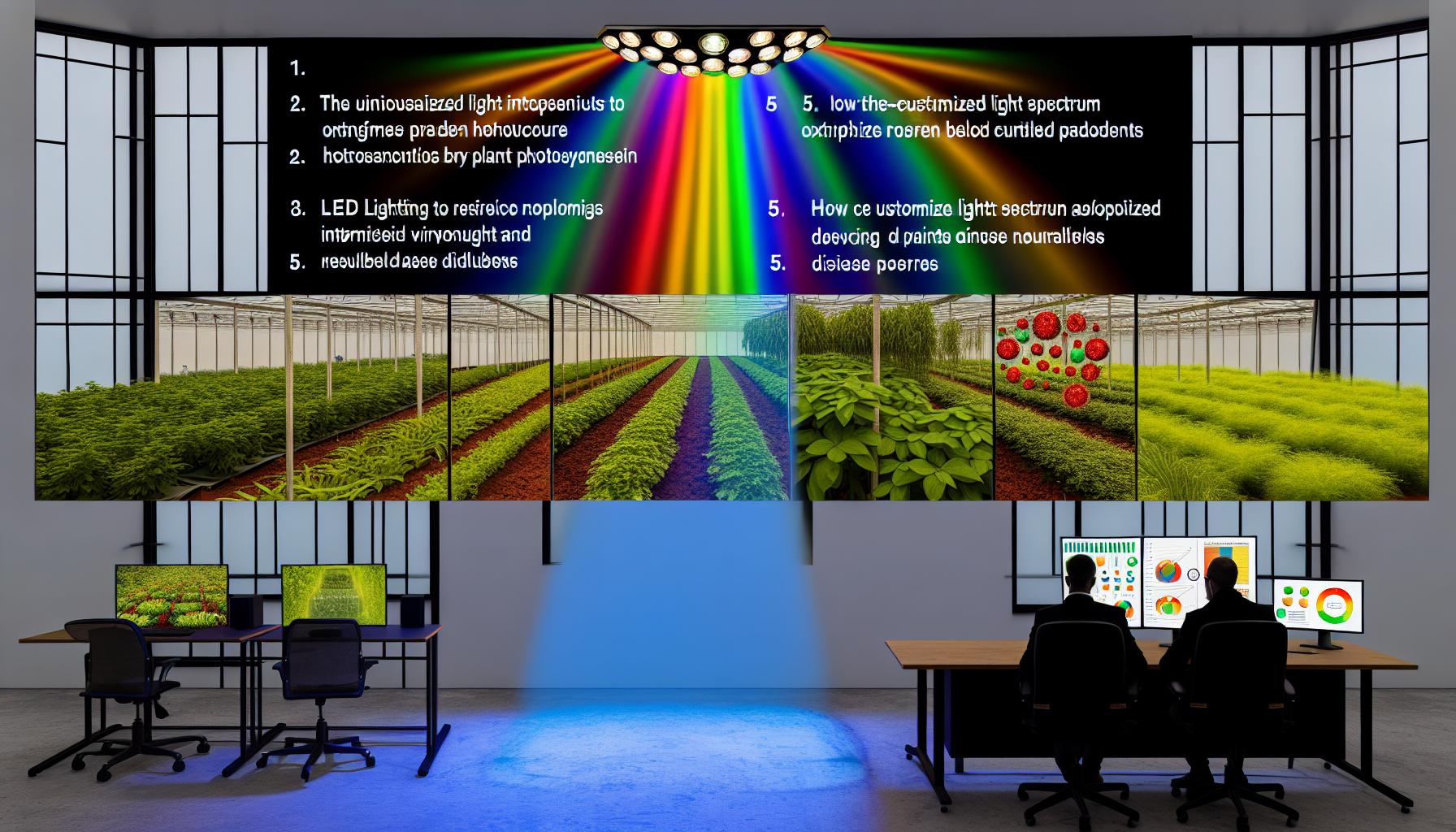
LED lighting has revolutionized horticulture by offering tailored light spectrums that optimize photosynthesis and accelerate plant growth. Unlike traditional lighting methods, LEDs provide precise control over light intensity and wavelength, which significantly impacts plant development stages.
One key advantage is the ability of LEDs to emit specific wavelengths, especially in the red and blue spectrum, which are crucial for chlorophyll absorption. This targeted illumination fosters healthier plants with improved biomass production.
Moreover, LED lights generate less heat, reducing plant stress and minimizing water evaporation rates. This creates a more stable growing environment, which is essential for maintaining plant health and reducing the occurrence of diseases.
For those interested in deeper insights into LED light effects on plant growth, see our section on Benefits of LED Lighting in Horticulture. Additionally, you can explore comprehensive research on optimizing horticultural lighting at Neptune LED’s blog.
Advances in LED technology continue to improve energy efficiency and adaptability, making them a sustainable choice that supports both plant development and reduced operational costs.
How Does Customized Light Spectrum Optimize Plant Photosynthesis?
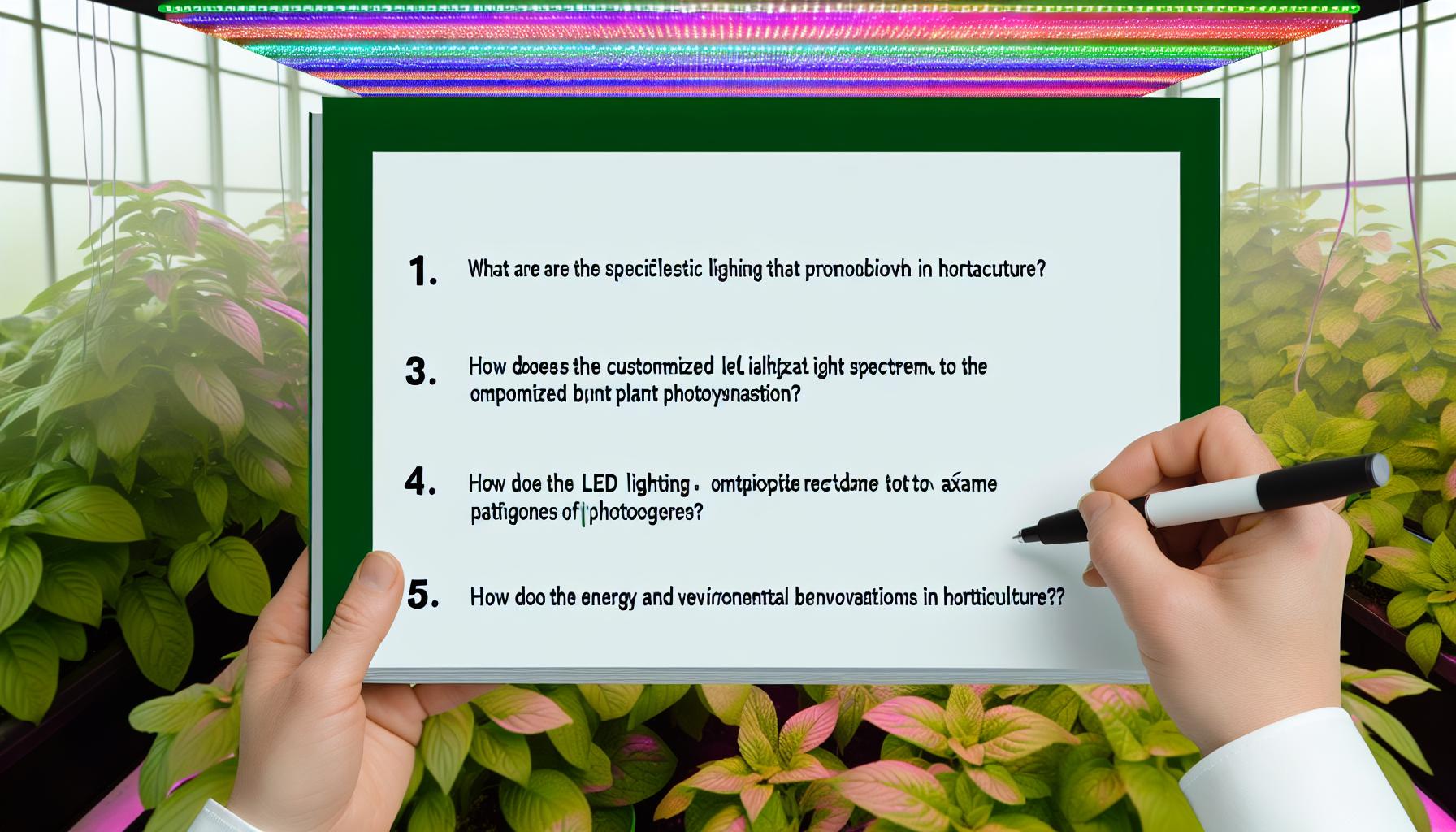
Plants rely on photosynthesis to convert light energy into chemical energy, a process essential for growth and development. By tailoring the light spectrum to specific wavelengths, LED technology can significantly enhance this process, maximizing plant efficiency.
Customized spectra typically include a balanced mix of blue and red light, which are the most effective wavelengths for activating chlorophyll. Blue light supports vegetative growth and leaf development, while red light promotes flowering and fruit production.
Innovative LED lighting systems allow growers to adjust these spectrums dynamically, optimizing photosynthesis depending on the plant’s growth stage. This adaptability not only improves yields but also reduces energy consumption, making horticulture more sustainable.
For a deeper understanding of photosynthesis mechanisms, visit this comprehensive resource.
If you’re interested in choosing the right LED horticultural lights, explore our guide on selecting LED grow lights to optimize spectral output for your plants.
How Does LED Lighting Contribute to Pathogen Reduction in Horticulture?
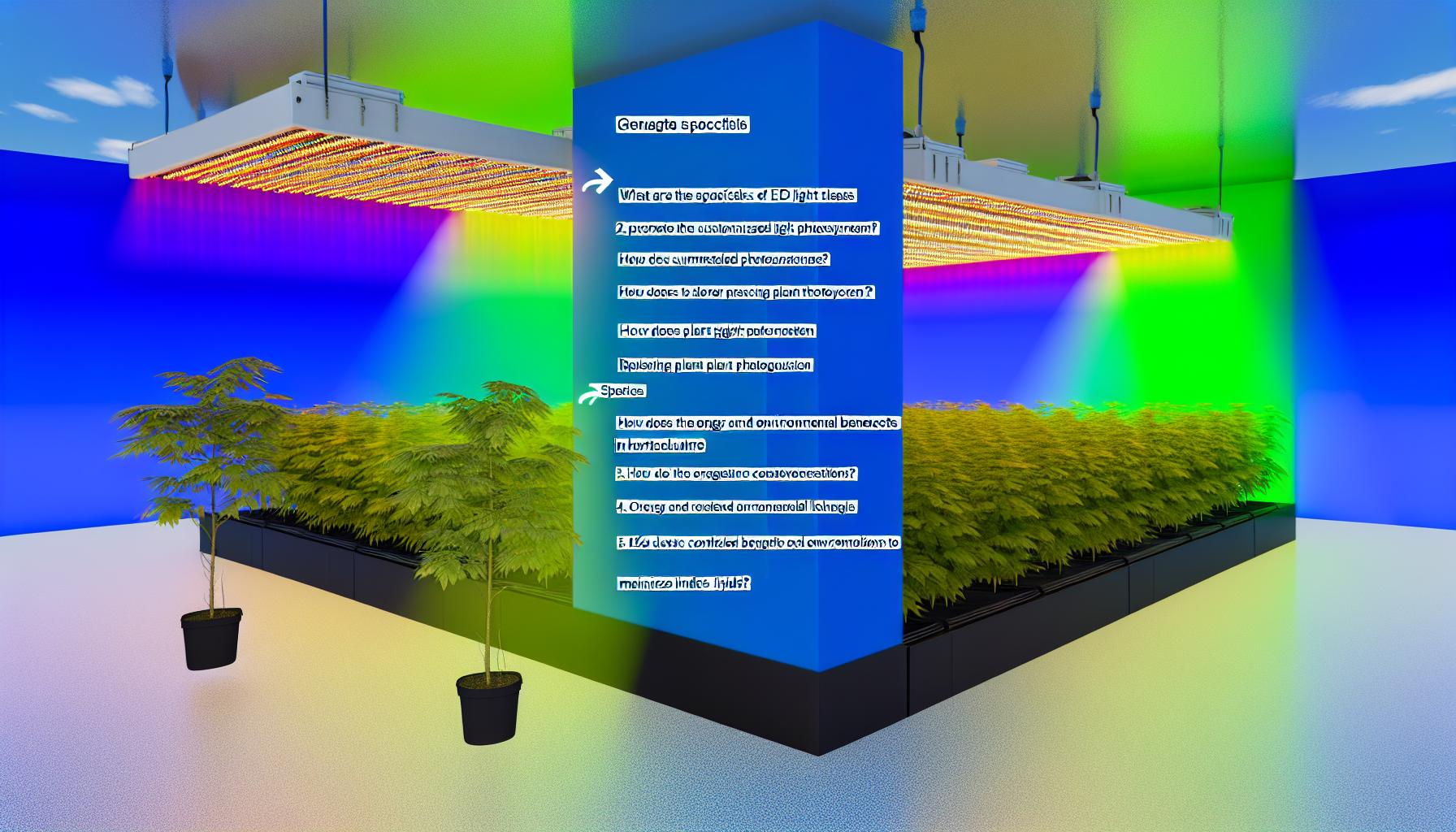
LED lighting technology plays a significant role in reducing harmful pathogens in horticultural environments. By customizing light spectra, growers can inhibit the growth of bacteria, fungi, and other harmful microorganisms that negatively affect plant health.
Specific wavelengths, especially in the blue and ultraviolet range, have been shown to suppress pathogen development, creating a healthier growing environment without relying heavily on chemical treatments.
Additionally, the low heat emission of LED lights helps maintain optimal humidity and temperature conditions, which discourages pathogen proliferation.
For more insights on optimizing plant growth and health with lighting, visit our section on LED lighting for plant growth.
To dive deeper into scientific research on this topic, check out the detailed study available at MDPI Journal on LED Lighting and Pathogen Control.
What Are the Energy and Environmental Benefits of LED Innovations in Horticulture?
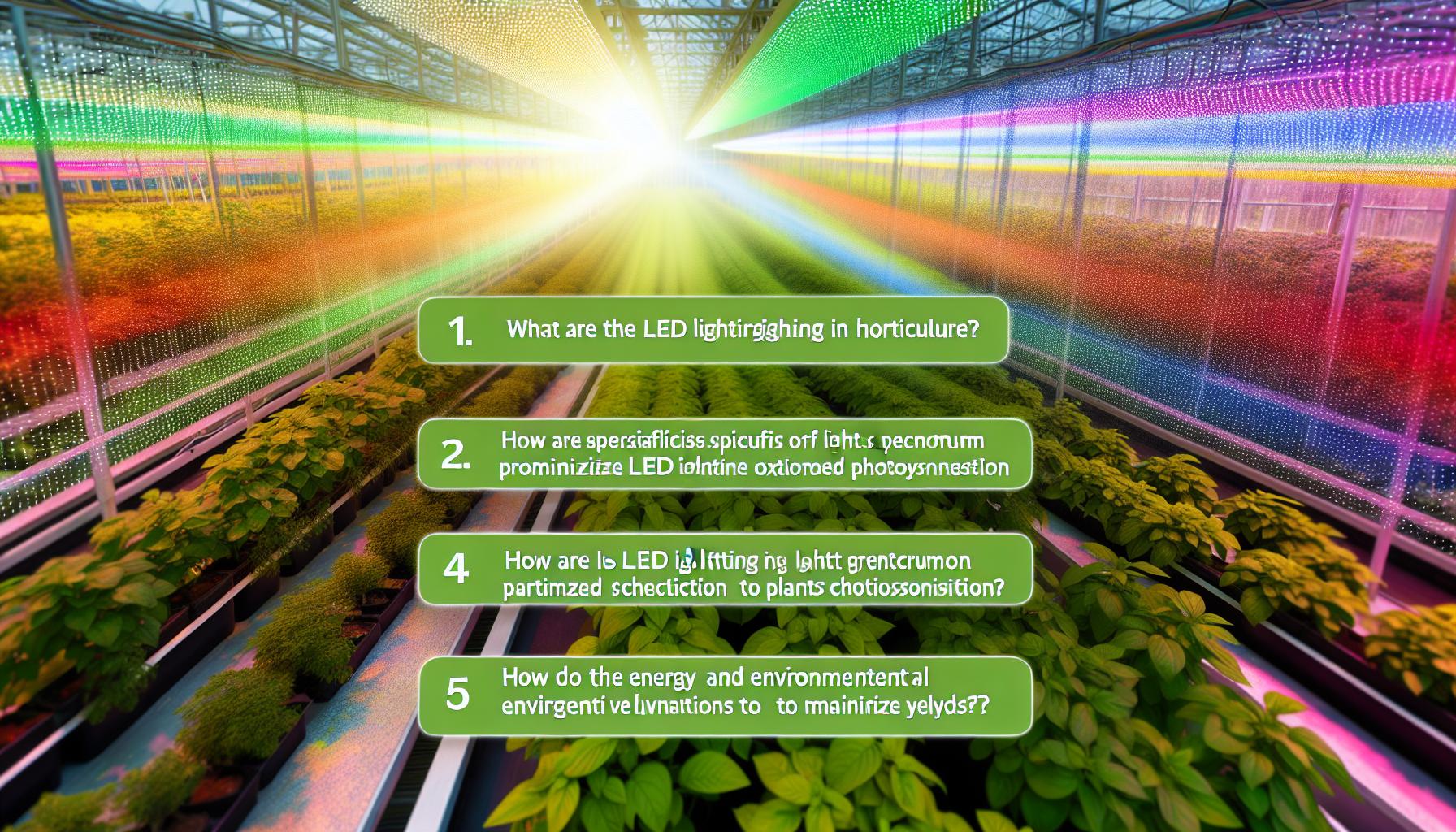
LED lighting innovations have revolutionized horticulture by significantly reducing energy consumption compared to traditional lighting methods. These energy-efficient solutions lower electricity costs and contribute to a smaller carbon footprint, making horticultural practices more sustainable.
The ability of LEDs to emit specific light spectra tailored to plant needs enhances photosynthesis efficiency and accelerates growth while minimizing waste energy. This precision also reduces the heat output, lowering cooling requirements within controlled environments.
Beyond energy savings, LEDs contribute to environmental protection by reducing the use of harmful chemicals. Their effectiveness in limiting pathogen development helps decrease reliance on pesticides and fungicides, promoting a healthier ecosystem around cultivation sites.
For more insights on how lighting impacts plant development and pathogen control, check our section on LED lighting’s role in plant health.
To dive deeper into the future of horticultural lighting, the comprehensive analysis found at TrendForce offers excellent information on how LED technology is shaping smarter farming practices.
How Do LED Lights Adapt to Controlled Environments to Maximize Yields?
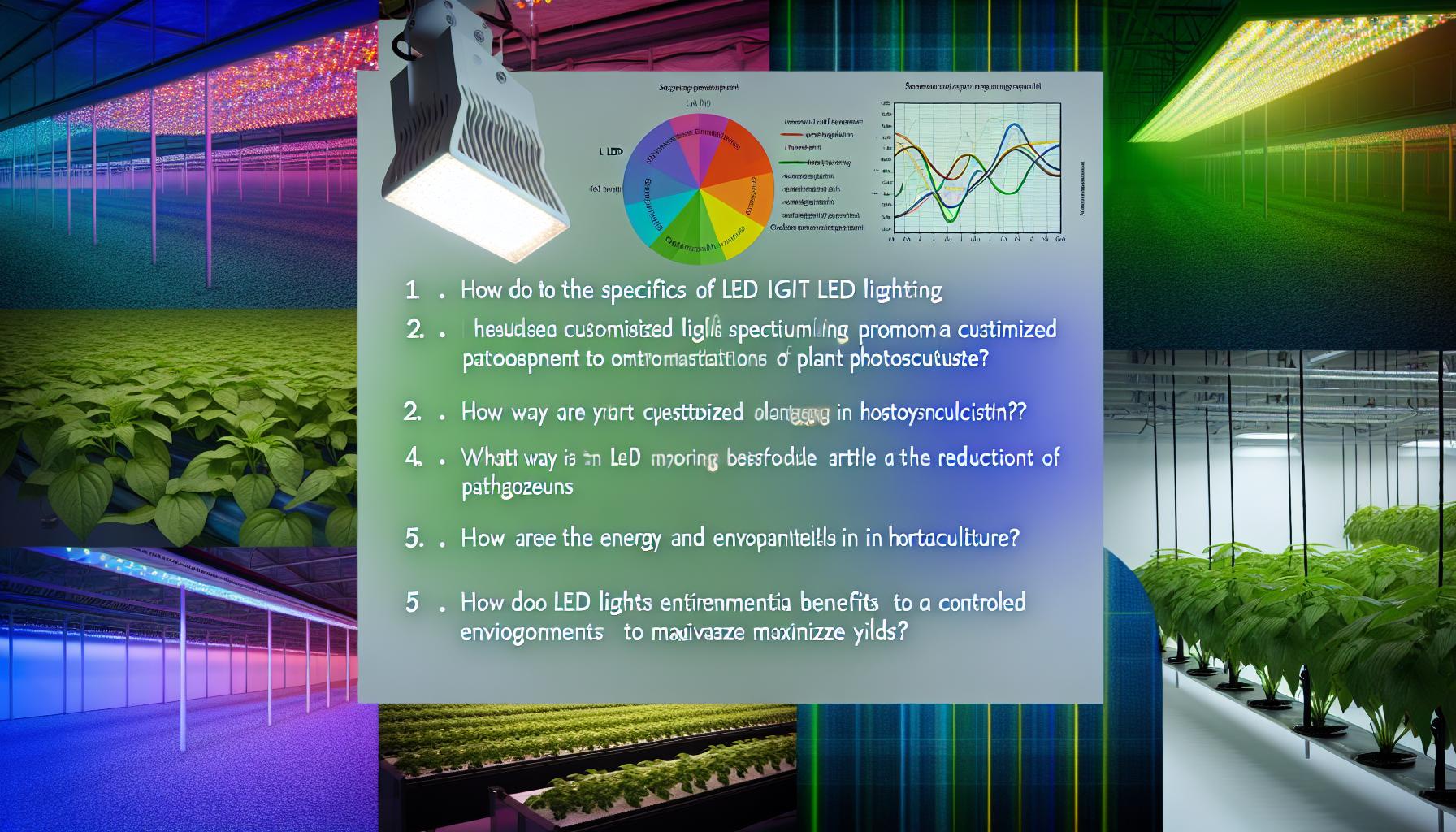
LED lighting technology offers unparalleled adaptability in controlled horticultural environments, allowing growers to fine-tune light spectra, intensity, and duration to meet the specific needs of different plant species. This precision promotes optimal photosynthesis and accelerates growth cycles while reducing energy consumption.
By customizing the light spectrum, LEDs can stimulate particular plant responses such as flowering, fruiting, or vegetative growth. Controlled environments equipped with LED systems can also simulate natural daylight patterns or extend photoperiods to maximize yields, making these solutions invaluable in modern horticulture.
Furthermore, LEDs emit less heat compared to traditional lighting, minimizing thermal stress on plants and enabling closer placement to crops. This reduces water evaporation and helps maintain stable humidity and temperature levels in growth chambers or greenhouses.
Another significant advantage is the ability of LED lighting to reduce pathogen development. Specific wavelengths have been shown to inhibit bacterial and fungal growth, improving plant health and decreasing reliance on chemical treatments.
To explore more about the innovative uses of LED lighting in controlled settings, check out our section on LED lighting and plant growth optimization.
For a deeper understanding of LED technology and its benefits, you can also visit external resources such as Besen LED Light Benefits, which provides extensive information on energy efficiency and sustainability.
In conclusion, LED lighting innovation plays a crucial role in horticulture by promoting plant growth and reducing pathogens. The unique features of LED lighting, such as customizable light spectra, contribute to optimizing photosynthesis and improving overall plant health.
Furthermore, the energy-efficient nature of LED lighting not only benefits the environment but also offers cost savings for growers. By adapting to controlled environments, LED lighting systems can maximize yields and ensure consistent plant development.
Overall, the advancements in LED lighting technology are revolutionizing the way we cultivate plants, providing a sustainable and effective solution for horticultural practices.

